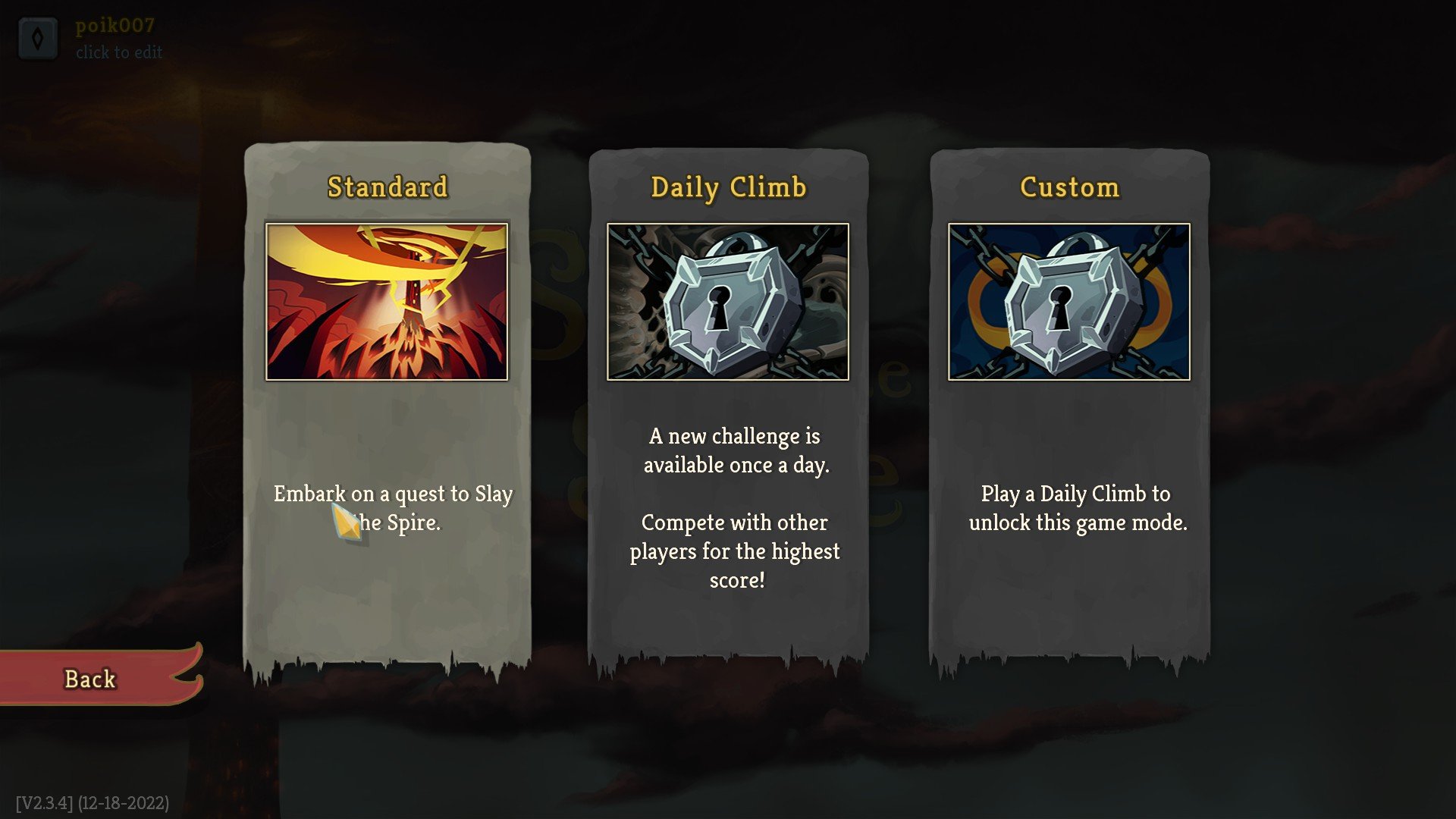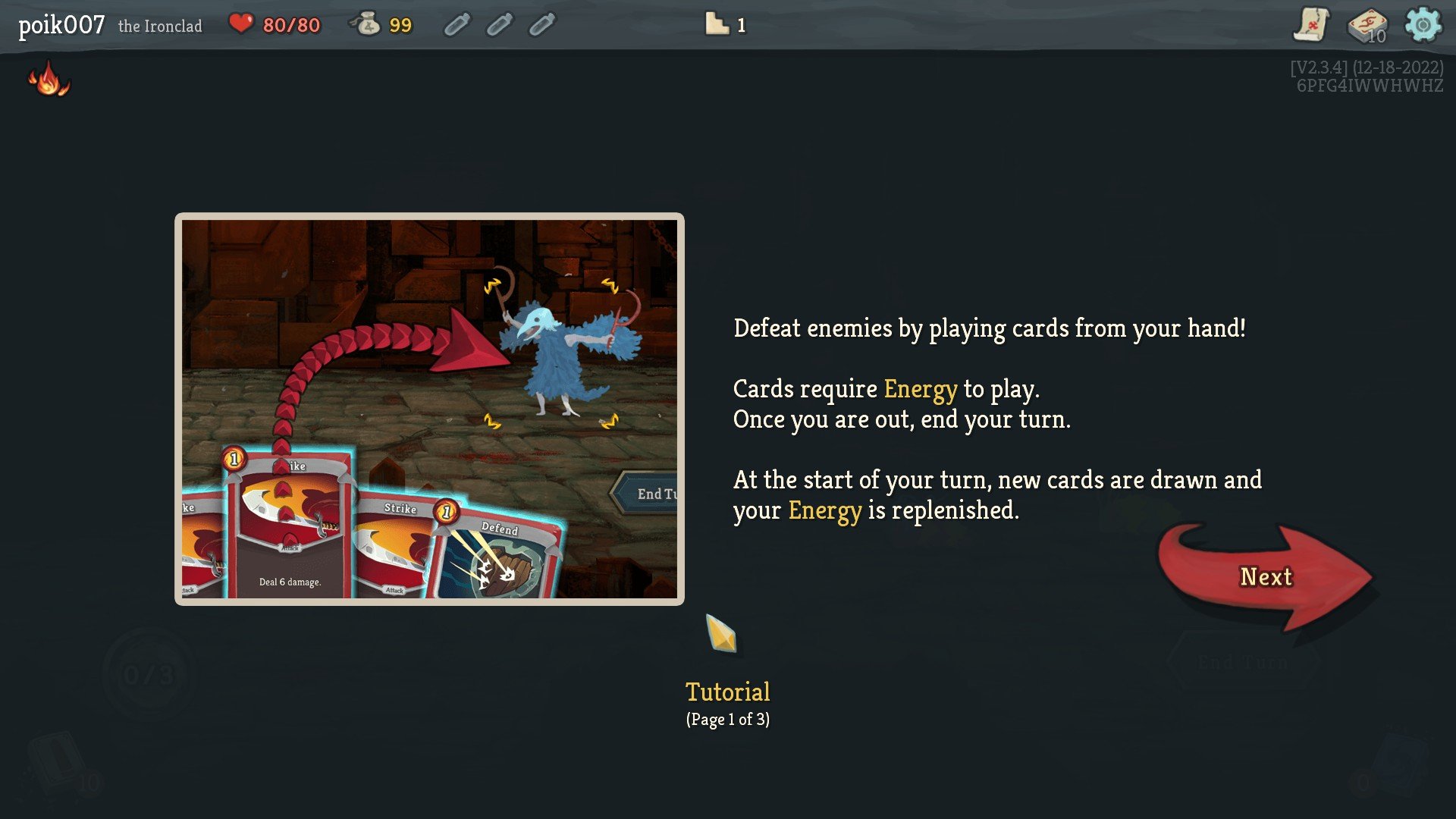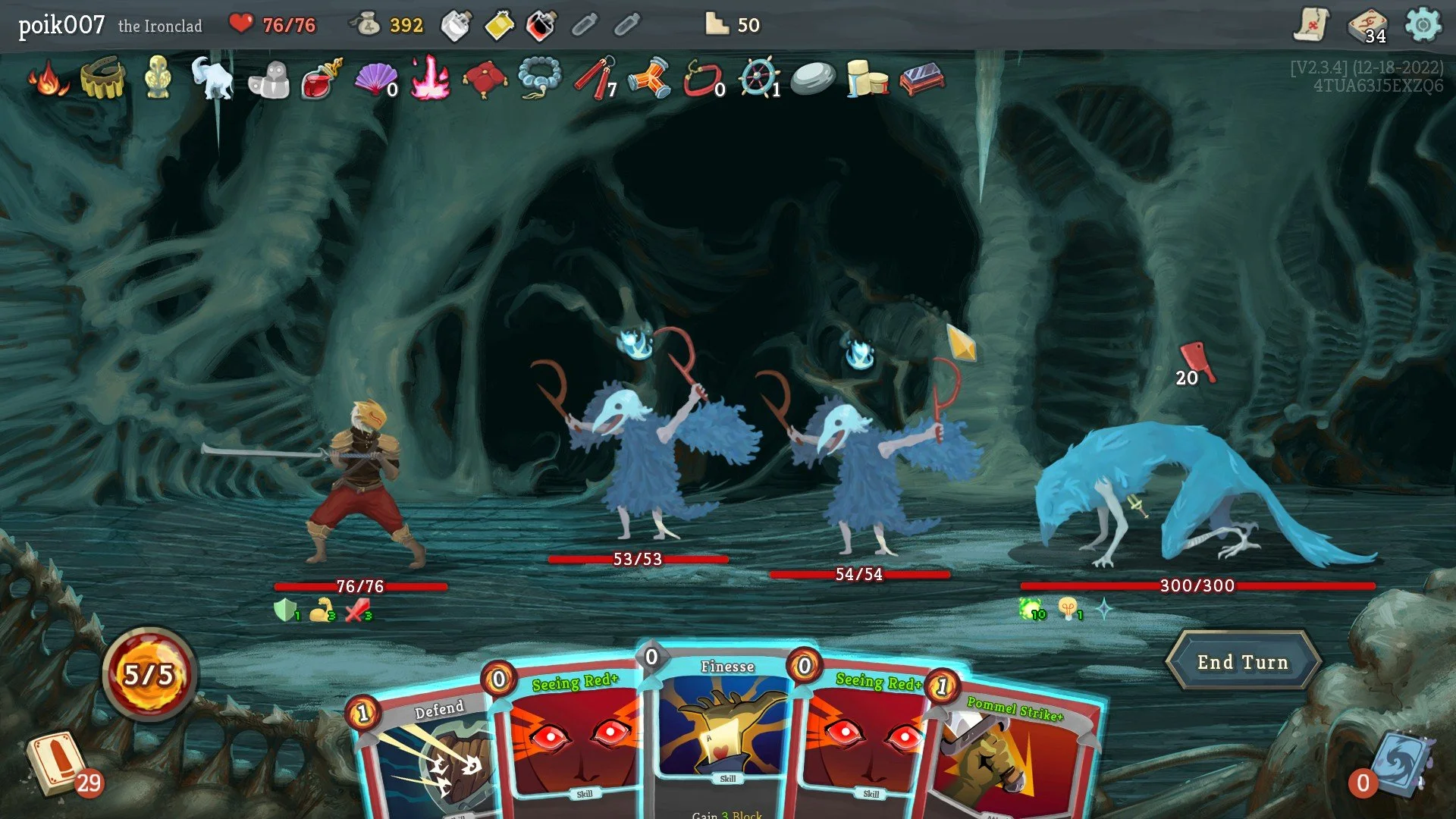One of the most famous deckbuilding roguelikes, Slay the Spire wasn’t a game I had played in the past until very recently. For my enjoyment of RPG mechanics and card games, I’m not really into deckbuilding (it might be because long term planning of strategies when combined with luck-based factors doesn’t scratch my itch) and roguelikes aren’t my cup of tea either, but I still gave it a shot. It might be reductive, but I feel like anytime someone announces a “deckbuilding roguelike” I know exactly what I’m getting into. Slay the Spire did just that, for better or worse.
The structure of the game is fairly simple; you pick a character and go through a graph of encounters where you’ll fight enemies, make small decisions and upgrade/change your deck in order to reach an area boss. Encounters are divided in turns where you play cards based on the energy you have available, then enemies take usually predictable actions against you; rinse and repeat until one side is defeated.
You deal damage and heal yourself, but added on top of that is the usual list of keywords, effects and systems that all impact each other in various ways. Combatants can gain armor, inflict various status effects (to deal more damage, take more damage, and the like), so the goal is to build a deck that focuses on a few mechanics that go well together, especially because enemies will do so as well.
When winning fights, you’ll get gold (used at shops you can find on the map), new cards and consumable items that also have various effects that can turn the tides in future battles. You’ll also sometimes find powerful artefacts that make or break your builds. I get overwhelmed very easily by the deckbuilding-ness of it all. You have so many choices, adding and removing cards from your deck, sometimes it’ll work for a while, but fall flat against certain opponents, sometimes you won’t encounter them at all. But even so, there’s a lot to figure out and enjoy in Slay the Spire, there are a ton of mechanics, enemy types (some of which feel more like puzzles than they are actual fights), and every time you finish a run (no matter if you won or lost) you’ll get some progress to unlock more cards for your future attempts.
Where the game really lost me was in the “roguelike” aspect of which, after going through an okay run for quite some time and then losing, I don’t really feel like starting over. Maybe I got a new card, maybe I’m making progress towards something, but the potential chance to get a new card which might help me if the stars align (My deck supports that card, I get the right artefacts, enemies aren’t strong against that card, etc.) doesn’t feel like a powerful enough motivator to retry. My current deck got me where I am, it took some time, I’d rather just keep using it.
Ultimately, I’m not certain if Slay the Spire was the first in its genre, but it’s certainly a poster child of what that kind of game looks and plays like. As I said, I don’t usually enjoy the “run-based” type of gameplay if I’m not feeling like I’m gaining enough ‘real’ momentum, but it still holds up pretty well, so you can still check it out if you’re interested!


























